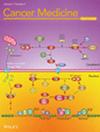Estimating the Burden of False Positives and Implementation Costs From Adding Multiple Single Cancer Tests or a Single Multi-Cancer Test to Standard-Of-Care Screening
Abstract
Background
Blood-based tests present a promising strategy to enhance cancer screening through two distinct approaches. In the traditional paradigm of “one test for one cancer”, single-cancer early detection (SCED) tests a feature high true positive rate (TPR) for individual cancers, but high false-positive rate (FPR). Whereas multi-cancer early detection (MCED) tests simultaneously target multiple cancers with one low FPR, offering a new “one test for multiple cancers” approach. However, comparing these two approaches is inherently non-intuitive. We developed a framework for evaluating and comparing the efficiency and downstream costs of these two blood-based screening approaches at the general population level.
Methods
We developed two hypothetical screening systems to evaluate the performance efficiency of each blood-based screening approach. The “SCED-10” system featured 10 hypothetical SCED tests, each targeting one cancer type; the “MCED-10” system included a single hypothetical MCED test targeting the same 10 cancer types. We estimated the number of cancers detected, cumulative false positives, and associated costs of obligated testing for positive results for each system over 1 year when added to existing USPSTF-recommended cancer screening for 100,000 US adults aged 50–79.
Results
Compared with MCED-10, SCED-10 detected 1.4× more cancers (412 vs. 298), but had 188× more diagnostic investigations in cancer-free people (93,289 vs. 497), lower efficiency (positive predictive value: 0.44% vs. 38%; number needed to screen: 2062 vs. 334), 3.4× the cost ($329 M vs. $98 M), and 150× higher cumulative burden of false positives per annual round of screening (18 vs. 0.12).
Conclusions
A screening system for average-risk individuals using multiple SCED tests has a higher rate of false positives and associated costs compared with a single MCED test. A set of SCED tests with the same sensitivity as standard-of-care screening detects only modestly more cancers than an MCED test limited to the same set of cancers.


 求助内容:
求助内容: 应助结果提醒方式:
应助结果提醒方式:


